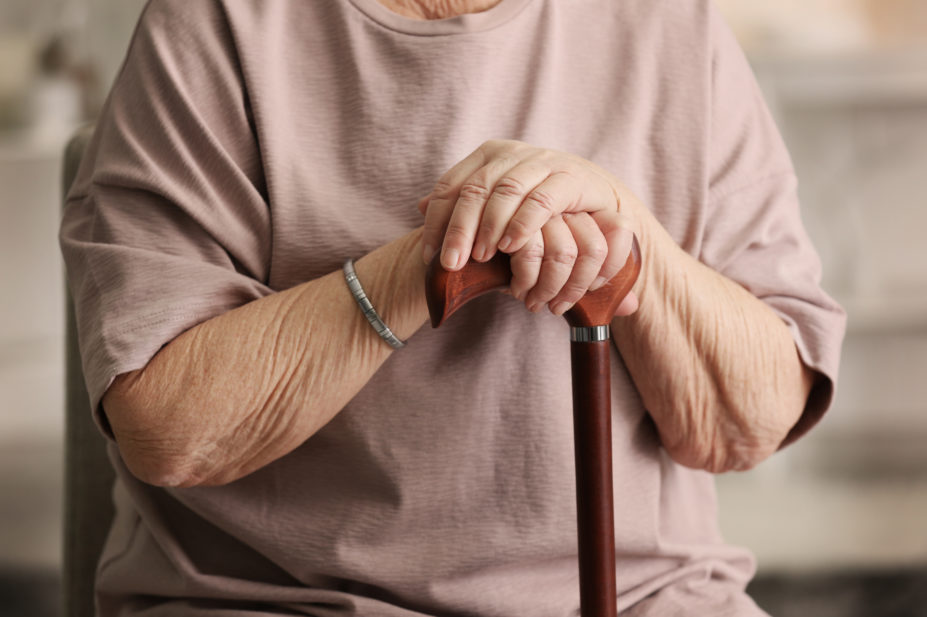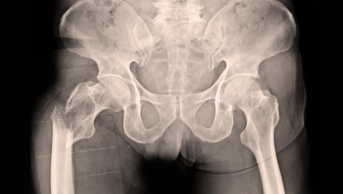
Shutterstock.com
The National Institute for Health and Care Excellence (NICE) has overturned its provisional decision not to recommend the first new osteoporosis medicine it has considered for more than a decade.
In its final technology appraisal document, published on 1 April 2022, NICE recommends romosozumab as an option for treating severe osteoporosis in people after menopause who are at high risk of fracture, and who meet certain criteria.
Romosozumab, a monoclonal antibody that works by both inducing new bone formation and reducing bone breakdown, is one of only two treatments licensed by the Medicines and Healthcare products Regulatory Agency (MHRA) that stimulates new bone formation. It is already approved for use in Scotland and Northern Ireland, as well as in parts of Europe.
NICE’s recommendation comes after it published draft technology appraisal guidance on 25 November 2021, which did not recommend romosozumab — for use within its marketing authorisation — for treating severe osteoporosis after menopause in people at high risk of fracture.
In response to the draft appraisal, more than 100 clinicians, led by the Royal Osteoporosis Society, called on NICE to work with them to explore how patients in England and Wales could benefit from romosozumab, manufactured by UCB, “sparing them the pain and fear of fractures”.
However, in the final appraisal document, NICE now says that the drug, which is administered as a twice-monthly injection, should be given in cases of severe osteoporosis to people after menopause who are at high risk of fracture, but only if they have had a major osteoporotic fracture within 24 months, meaning they have an imminent fracture risk.
It also says that the drug can only be recommended if the pharmaceutical company provides the drug according to the commercial arrangement; making romosozumab available to the NHS with a discount.
These criteria, NICE said, are “narrower” than that of the marketing authorisation.
According to the document, clinical trial evidence suggests that romosozumab followed by alendronic acid is more effective at reducing the risk of fractures than alendronic acid alone.
In addition, it states that, when comparing romosozumab indirectly with other bisphosphonates and other medicines for severe osteoporosis, romosozumab was found “likely to be at least as effective” at reducing the risk of fractures in people with osteoporosis after menopause.
“But the extent of the benefit is uncertain because of differences between the trial populations in the indirect comparisons,” the document continues.
“The most likely cost-effectiveness estimates for romosozumab followed by alendronic acid compared with alendronic acid alone are within what NICE normally considers an acceptable use of NHS resources. So, romosozumab is recommended.”
The recommendation makes romosozumab the first treatment for severe osteoporosis to be made available to eligible patients since 2010.
Craig Jones, chief executive of the Royal Osteoporosis Society, which led calls for NICE to reconsider their provisional decision not to recommend romosozumab, described the final recommendations as “a major step forward” for people living with severe osteoporosis.
“We’re pleased that NICE has listened to the views of clinical experts and patient advocates. Now, no matter where people live in the UK, healthcare professionals and eligible patients will have the same range of treatment options.
“The decision to approve the new medication is a reminder that there are safe, effective therapies and treatment options available to help prevent fractures and enable people to live well with osteoporosis.”
Jones said that the “crucial next step” was to end the postcode lottery for ‘fracture liaison services’, which, he said, remained “a stubborn barrier” to people’s ability to get a timely diagnosis and treatment.
“Closing the eye-watering treatment gap for osteoporosis depends on ending the inequalities in local services across the NHS,” he added.
Kassim Javaid, an honorary consultant rheumatologist for the Nuffield Department of Orthopaedics, Rheumatology and Musculoskeletal Sciences at the University of Oxford, said the decision from NICE marked “a significant step forward” in osteoporosis management in England.
“This group of patients at very high risk of fracture, who previously had limited treatment options, will soon be offered this alternative anti-osteoporosis medicine as a first-line treatment.
“The bone community now has the opportunity to work together to deliver this NICE recommendation to our most vulnerable patients.”


